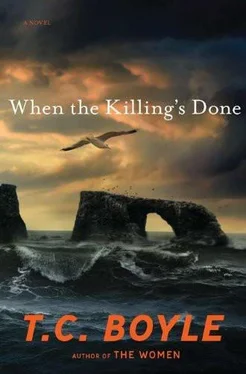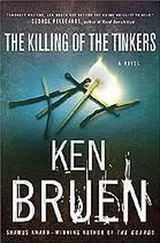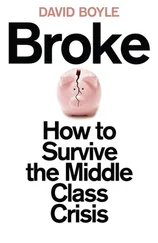What she expected to find there was something like the environment she’d known in Hawaii, only less developed, more primitive, closer to the edge, and she wasn’t disappointed. The roads, hacked out of the bush, were congested and deadly, the architecture tended toward reinforced concrete block (out of necessity, as a way of surviving the typhoons in this corner of what meteorologists dubbed “Typhoon Alley”) and everything, even the inside of the plastic bleach container she kept under the sink in her bunker cum one-room apartment, smelled of the festering explosive microbial life of the tropics. The jungle was lush, but many of the native trees, destroyed during the war, had been replaced by a South American import, the tangantangan, and it was eerily silent in the absence of the birds. With the birds gone, the insects had bred out, with the attendant result that the spiders — palm-sized, with iridescent yellow stripes on a gleaming black body — had experienced a population explosion, draping understory and canopy alike with the great trembling tents of their webs so that it was impossible to move through the jungle without having the stuff cling to you like a second skin. Not to mention the spider itself, presumably disappointed at being displaced from its web to your sleeve, hair, face.
The local people — Chamorros and Filipinos, mainly — never gave her much more than a vaguely curious glance. They saw her as Asian, or some variant thereof, and so, despite her Big Dogs running shorts and T-shirts touting Micah Stroud and Carmela Sexton-Jones, less an anomaly than someone like Robert Ford Smith or his wife, Veronica, both from Lancashire, with great beaky English noses and skin as blanched and lusterless as potato meal. She felt at home, as she had in Hawaii and at Berkeley, and perhaps she would have felt differently if she’d gone to lily-white Wisconsin to study the effects of cat predation on woodland birds or to Salt Lake City to monitor the grebe population on the Great Salt Lake, but she hadn’t.
Robert — not Bob or Rob or Robbie, just Robert — was in his mid-fifties and had been working to undermine the brown tree snake since the time of Julie Savidge, who’d since moved on. He was funded by the U.S. Department of Agriculture as part of the Brown Snake Research Program and his primary objective was to devise barriers to keep the snake away from the shipping containers at the port and the planes at the airstrip, the fear being that it would hitchhike to one of the neighboring islands — or worse, Hawaii. That was the first step — to limit its spread — but the second, and larger initiative, was to find some biological agent, a bacterium, virus or parasite, that could control its numbers so that the captive-bred native birds could be reintroduced. To that end, he trapped snakes and experimented on them. And her job, both in daylight and at night, with a headlamp and a stick to clear away the spiderwebs, was to check the traps and return to the lab with her clutch of snakes — there were always plenty — so that she could dissect them and determine what they’d been feeding on. It was solitary work—“creepy,” as Tim, no fan of snakes, would describe it — but it got her out of doors, which was the whole point of working in wildlife management to begin with.
There were three hundred sixty-five days in a year, that was incontrovertible, but in the three years she was on the island it seemed as if time had become elastic, stretching like a finely gradated bungee cord till a single day felt like two or even three. She learned to do without culture — American culture anyway — and while she did make several Guamanian friends and attended their various family gatherings and fiestas and came to relish octopus kelaguen and breadfruit stewed in coconut milk, she never went native as so many of the others at the field station invariably did. Her time was for the most part solitary and she moved through the bush like a native creature herself — smallish, with abundant pelage, keen observational powers and a reflexive ability to duck branches draped with spiderwebs. She trapped snakes in a wire basket in which a second much smaller wire basket held a white mouse and its ration of chopped potato, stuffed them in a sack and brought them back to the field station, where she removed, euthanized and dissected them or fitted them with miniature radio collars and let them go again to see exactly what they were up to.
The snakes were whips of muscle, powerful enough to raise three-quarters of their length up off the ground and hold it there for minutes at a time, but her muscle, a primate’s muscle, was superior. She killed thousands of them. She was bitten half a dozen times. She became intimate with the peculiar dry pickled odor of the brown snake’s intestines. And she found, contrary to popular opinion or the first law of amateur snake collectors, that this snake did not require live prey or even prey at all. It was so adaptable as to be frightening. When the birds were gone, it ate rats and lizards. And when it couldn’t find a rat or lizard, it came into the yard and the house and snapped up what it could, whether animate or not. Twice, while slitting open the bellies of snakes, she came across pale greasy twists of the plastic raw hamburger is packaged in. And once, in an image worthy of Buñuel, she discovered the stained white tube of a used sanitary napkin, saturated in blood. Even now, when she closes her eyes at night, she can see the snakes in the twilight of her consciousness, erect and weaving their heads, looking for the purchase to climb.
Tim chatters. The boat hydroplanes. Her stomach flutters around the fragments of trail mix and the coffee she’s washed it down with, but she doesn’t get seasick — she never does. It’s a question of mind over matter — or rather, mind over peristalsis. And reflux. Some people can control it and some can’t. Tim, for instance. Tim’s a rock. He could eat a seven-course dinner and ride the roller coaster at Magic Mountain all day long and it wouldn’t affect him in the slightest — in fact, if it weren’t for the centrifugal forces involved he could probably tuck in his napkin and chow down while on the coaster. A number of the passengers are a bit more delicate, though, including at least one of the journalists this little jaunt is meant to win over, and Alma can’t help feeling a prick of anxiety. Toni Walsh, of the Santa Barbara paper, which to this point has been less than enthusiastic over the rat issue and the ensuing question of pig control on Santa Cruz, came aboard looking as if she’d had a rough night, and as soon as they left the harbor she settled in at a table by the window and put her head down, feigning sleep. Now, when they’re no more than a mile out, she rises abruptly and staggers outdoors to the stern, where the wind can carry off whatever she’s had for breakfast. Not a good start. And of course, just to needle her, Tim lifts his eyebrows and whispers, “There’s a shitty write-up in the making.”
As the boat slows and they cruise into the dock, the sun cutting through what’s left of the mist in great rectilinear columns, the cliffs rearing, birds squawking, everyone seems to come alive. People who’ve been silent the whole way across are suddenly gabbling in high excited voices, the sixth graders are uncontainable — What are they getting out of this, she wonders, besides sugar and sunburns? — and the faces of her office mates have that rare look of release she sees only on Friday afternoons. She’s right there in the middle of it, helping people up the ladder, making small talk, bantering, even drawing a smile from Alicia, the pale shy secretary who seems locked up like a box without a key, and then she’s shaking hands with Fausto Carrillo, the mayor of Oxnard — he’s all smiles — and guiding a shaky Toni Walsh to the levitating rungs of the ladder.
Читать дальше












